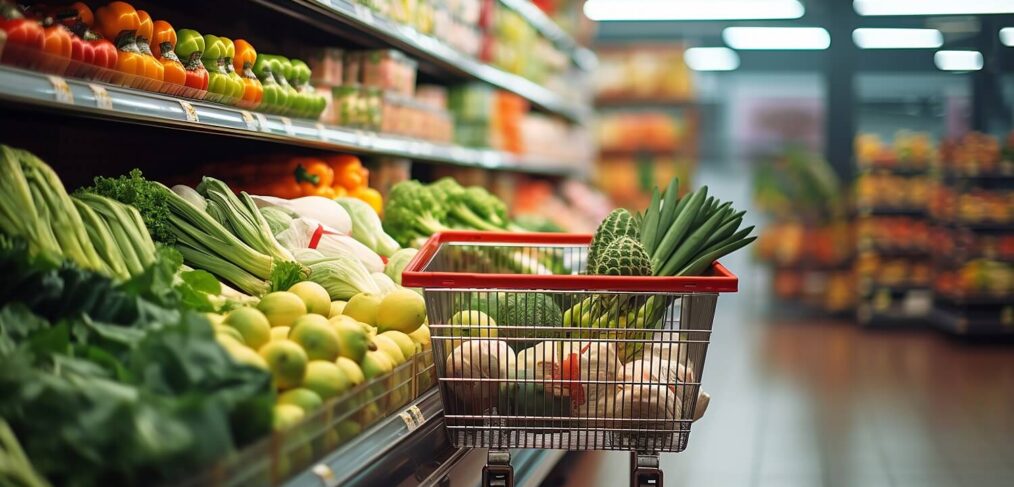
Driving Growth in Today’s Grocery Sector
The Canadian grocery sector is in a volatile state due to the inflationary wars. Though much has been made about the rising food prices in Canada, the UK’s November’23 CPG inflationary figure came in at 9.2%[i], as compared to 5% for Canada.[ii] Over the past year, though food sales increased 6.6%, it was all fueled by inflation.[iii] The greatest concern for brands moving forward is threefold:
- 20% of consumers are consuming less food to save money.[iv]
- 87% of Canadians feel worse off due to the increased cost of living.
- Our growth is starting to decline. Taking the increase in the Canadian population (+2.9%) into consideration, the overall unit gap is (-4%). This holds for all provinces including Canada’s biggest 3: Ontario: (-4.3%), Quebec: (-3.9%), and BC: (-4.1%).[v]
On a positive note, Canadians are spending more time in the kitchen to save money, with 55% of them saying “cooking meals is enjoyable”.[vi] The million-dollar question moving forward: What do brands do to drive growth in today’s sector?

This past December, I had the pleasure to listen to Mr. Carman Allison’s (Vice President, Thought Leadership, North America – Nielsen IQ) presentation he made as part of the Canadian and Coffee Tea Association’s luncheon. As part of his presentation, he laid out four strategies to drive volume.[vii]
1. Innovate to Stay Relevant!
Innovation is critical to the brand’s growth. This especially holds if a private label format available is not available in the category, given as Carman noted 53% of Canadians think store brands are a “good alternative” to name brands. He also noted that brands that increased innovation were 1.8x more likely to grow overall sales than those brands who do not innovate. Carman cited 5 different innovation strategies including “Disrupt a Category”. Olabamboo (www.olabamboo.com) is doing just that. A Canadian based business, they are the first toothbrush manufacturer in Canada – bamboo or plastic.
“There is no one-size fits -all approach to innovation”. Carman Allison, 2023.
2. Reach Consumers Where They Are!
Brands must have a distinct target audience, and understand where they shop. As noted by Carman, 92% of Canadians have changed how they shop to manage expenses, and dollar stores and discount grocery are the only channels that have experienced unit sales increases in 2023 compared to 2022.[viii] On-line shopping is here to stay. As Carman alluded to: 52% of buyers are exclusive to in-store, and 48% of buyers purchase in-store and on-line. “Consumers move fluidly across channels to fulfill their needs, meaning growth will come from a balance of both online, and in-store strategies”. Carman Allison, 2023. Note: 81% of grocery searches on Amazon are unbranded.[ix]
3. Promote with Purpose!
As part of Carman’s presentation, he alluded to the increase in products sold on promotion. Over the past year, 50.4% of all food sales were sold on promotion, but yet 38% of all promotions did not break even. In today’s food world, brands need to include a promotional allowance as part of their pricing structure. “Balancing sustainability and profitability is critical in a slow market”. “Focusing on short-term volume can harm long- term profitability.” “Look for ways to be more profitable on promotions overall”. Carman Allison, 2023.
4. Maximize Assortment!
Though greater variety is conventional retailers’ greatest strength, many channels are cutting back on their assortment. Yet, 40% of consumers will buy elsewhere if they can’t find the product they are looking for.[x] Carman alluded to:
- Increased item availability is driving velocity: 21% of the categories.
- Velocity declines as item availability is suppressed: 46% of the categories.
“Rationalizing on sales rate alone, we may be leaving category dollars on the table”. “We need to consider not only an item’s impact on the shelf but how it interacts with other items on the shelf for shelf efficiency”. Carman Allison, 2023
Food Distribution Guy’s Final Thoughts!
The Canadian grocery sector still offers food manufacturers a rewarding market to increase sales and distribution. Yet, times are challenging for brands to satisfy fast-changing consumer behaviours. Here are Food Distribution Guy’s 3- thoughts moving forward:
- Innovation is critical. Brands would be wise to try and engage in categories in which a private label format is not available. Innovation must be demand-driven and future oriented.
- Brands must embrace a multi-channel strategy. They must understand what product attributes motivates their target audiences purchase, and where they shop. Do not exclude the dollar stores.
- Brands must come prepared to support their product launch. 43% of Canadians are planning their meals and purchases.[xi] Display shippers have been identified as the 2nd best in-store display to attract the In-Out shopper.[xii]
I leave you with this quote:
“I honestly believe in the U.S.; a lot of CPG companies are just not very good at innovation. They’re not very good at moving their products forward. They’re lazy.”
Neil Saunders, Managing director, Global Data
References:
[i] Cost of Living Insights: Food, www.ons.gov.uk
[ii] The Canadian Grocery Sector, A Year in Review, Nielsen IQ, December 2023
[iii] Canadian Grocery Sector Up-Date 2023, The President’s Report, Nielsen IQ, November 2023
[iv] The Canadian Grocery Sector, A Year in Review, Nielsen IQ, 2023
[v] Value vs. Volume, Changing the Conversation, Nielsen IQ, December 2023
[vi] The Canadian Grocery Sector, A Year in Review, Nielsen IQ, 2023
[vii] Value vs. Volume, Changing the Conversation, Nielsen IQ, December 2023
[viii] The Canadian Grocery Sector: A Year in Review, Nielsen IQ, 2023
[ix] Value vs. Volume, Changing the Conversation, Nielsen IQ, December 2023
[x] Driving Growth in a Down Market, www.canadiangrocer.com, December / January 2023
[xi] The Canadian Grocery Sector, A Year in Review, Nielsen IQ, 2023
[xii] Stopping the In-and-Out Shopper, www.westerngrocer.com, November 2023





